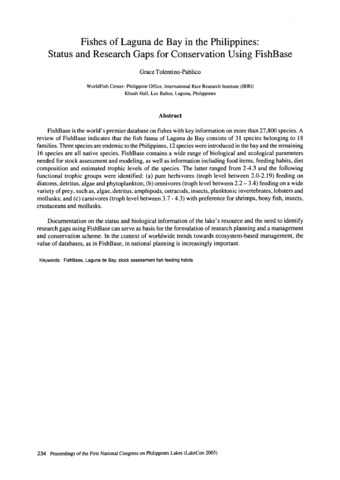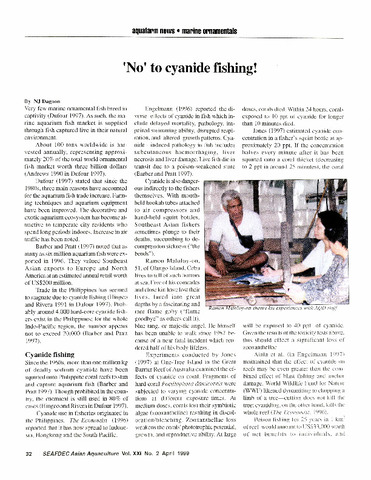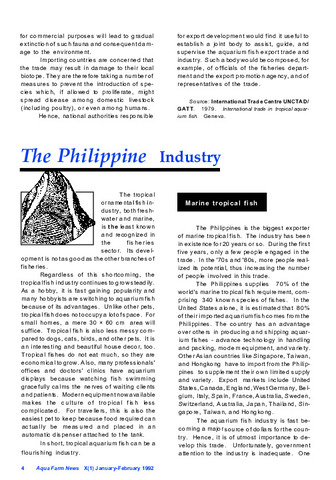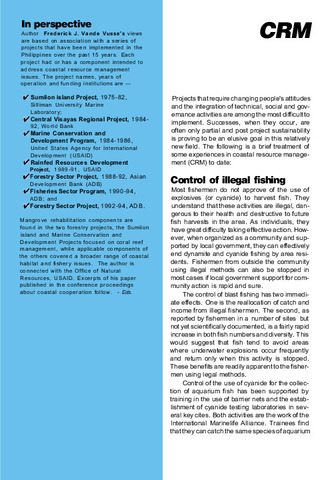Fishes of Laguna de Bay in the Philippines: Status and research gaps for conservation using FishBase
| dc.contributor.author | Tolentino-Pablico, Grace | |
| dc.contributor.editor | Cuvin-Aralar, Maria Lourdes | |
| dc.contributor.editor | Punongbayan, Raymundo S. | |
| dc.contributor.editor | Santos-Borja, Adelina | |
| dc.contributor.editor | Castillo, Lourdes V. | |
| dc.contributor.editor | Manalili, Eduardo V. | |
| dc.contributor.editor | Mendoza, Marlynn M. | |
| dc.date.accessioned | 2021-07-27T08:14:39Z | |
| dc.date.available | 2021-07-27T08:14:39Z | |
| dc.date.issued | 2005 | |
| dc.identifier.citation | Tolentino-Pablico, G. (2005). Fishes of Laguna de Bay in the Philippines: Status and research gaps for conservation using FishBase. In M. L. Cuvin-Aralar, R. S. Punongbayan, A. Santos-Borja, L. V. Castillo, E. V. Manalili, & M. M. Mendoza (Eds.), Proceedings of the First National Congress on Philippine Lakes (p. 234). Southeast Asian Regional Center for Graduate Study and Research in Agriculture (SEARCA). | en |
| dc.identifier.issn | 1656-8099 | |
| dc.identifier.uri | http://hdl.handle.net/10862/6144 | |
| dc.description | Abstract only. | en |
| dc.description.abstract | FishBase is the world s premier database on fishes with key information on more than 27,800 species. A review of FishBase indicates that the fish fauna of Laguna de Bay consists of 31 species belonging to 18 families. Three species are endemic to the Philippines, 12 species were introduced in the bay and the remaining 16 species are all native species. FishBase contains a wide range of biological and ecological parameters needed for stock assessment and modeling, as well as information including food items, feeding habits, diet composition and estimated trophic levels of the species. The latter ranged from 2-4.3 and the following functional trophic groups were identified: (a) pure herbivores (troph level between 2.0-2.19) feeding on diatoms, detritus, algae and phytoplankton; (b) omnivores (troph level between 2.2 - 3.4) feeding on a wide variety of prey, such as, algae, detritus, amphipods, ostracods, insects, planktonic invertebrates, lobsters and mollusks; and (c) carnivores (troph level between 3.7 - 4.3) with preference for shrimps, bony fish, insects, crustaceans and mollusks. Documentation on the status and biological information of the lake s resource and the need to identify research gaps using FishBase can serve as basis for the formulation of research planning and a management and conservation scheme. In the context of worldwide trends towards ecosystem-based management, the value of databases, as in FishBase, in national planning is increasingly important. | en |
| dc.language.iso | en | en |
| dc.publisher | Southeast Asian Regional Center for Graduate Study and Research in Agriculture (SEARCA) | en |
| dc.subject | FishBase | en |
| dc.subject | Laguna de Bay | en |
| dc.subject | Stock assessment fish feeding habits | en |
| dc.subject | Philippines | en |
| dc.title | Fishes of Laguna de Bay in the Philippines: Status and research gaps for conservation using FishBase | en |
| dc.type | Conference paper | en |
| dc.citation.spage | 234 | en |
| dc.citation.conferenceTitle | Proceedings of the First National Congress on Philippine Lakes | en |
| dc.subject.asfa | fish | en |
| dc.subject.asfa | research | en |
| dc.subject.asfa | databases | en |
Files in this item
This item appears in the following Collection(s)
-
LakeCon2003 [49]
Proceedings of the First National Congress on Philippine Lakes





